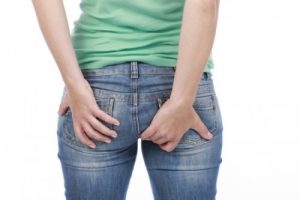Hemorrhoids or popularly known as piles is the pathological condition in which vascular veins present in anal and lower part of rectum get swollen due to increased pressure on these veins. The pressure on these veins causes pooling of blood in these veins and thus forming a bulge and thus causing inflammation in the lining of epithelium of these vessels. The blood vessels present in anal and rectal parts, otherwise, work as cushion and help in control of the stools, when present in the normal conditions. There are two types of hemorrhoids:
- Internal hemorrhoids: which are located inside rectum.
- External hemorrhoids: which are located under the outer layer of anus.
Signs and symptoms of Hemorrhoids
The symptoms mainly depend on the location of hemorrhoids:
External hemorrhoids are mainly responsible for rectal pain. Blood streaks may get noticed on the toilet paper after passing strain stool.
Internal hemorrhoids exhibit same symptoms as above. Bright red coloured blood starts appearing on the surface of stools as well.
The other symptoms include:
- Discomfort: Even after passing the stools, urge to pass more stools will be there causing discomfort. This condition arises due to the presence of bulge of hemorrhoid at the end of anal canal. Bigger in size the hemorrhoid is, more will be discomfort.
- Irritation: Hemorrhoids present at the end part of anus form bulge and may also secrete mucus, thus causing mild irritation around the surrounding skin.
- Itching: Irritation caused due to mucous secretion by these hemorrhoids lead to itching. This is the most common complaint of the patients suffering from piles.
- Pain: Pain while passing stools is very common in this condition. Internal hemorrhoids are less painful. But the hemorrhoids that are present at the end part of anus may cause pain if they get swollen or get squeezed by the surrounding muscles during contraction or relaxation. If severe pain is present, then emergency treatment may be required.
Tests for diagnosis of Hemorrhoids
Hemorrhoids can be diagnosed simply by physical examination and medical history of the patient, if it is external hemorrhoid. A doctor needs to do visual examination of the affected anal area to locate and evaluate the size of hemorrhoid so that he can develop treatment plan according to the degree of severity.
To detect possible abscesses or rectal tumours, a digit rectal exam or an anascopy is being done. No more other tests are required, if the patient is younger and do not exhibit any risk for cancer.
A doctor should exclude all those conditions in which rectal bleeding or discomfort are common. Differential diagnoses of this condition are:
- Colon polyp
- Anal fissure
- Inflammatory bowel disease
- Rectal prolapsed
Other tests may also be performed to make sure that nothing else like cancer is present which lead to the same above symptoms. These tests are generally not performed for the diagnosis of hemorrhoids. These tests are:
- Barium enema
- Flexible sigmoidoscopy: this test helps to have a clear view inside the anus and to look for any abnormal growth inside the track.
- Colonoscopy

 (1 votes, average: 4.00 out of 5)
(1 votes, average: 4.00 out of 5)